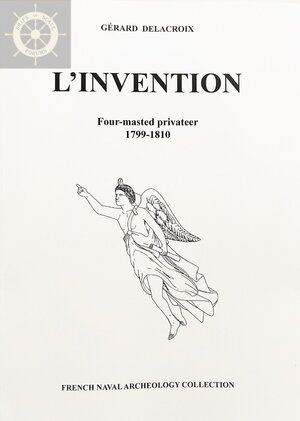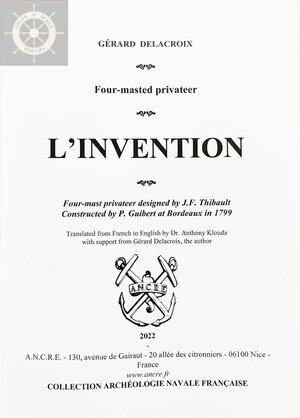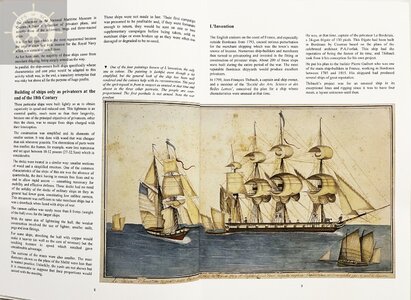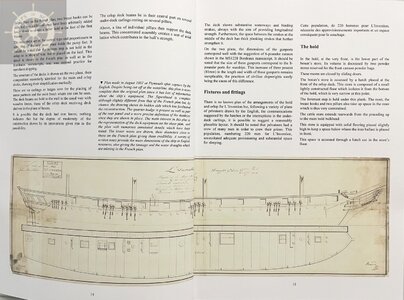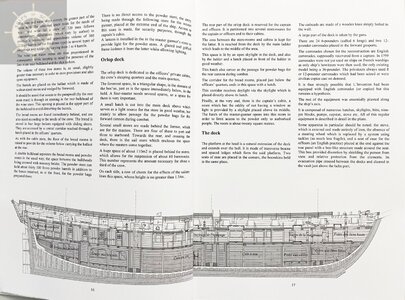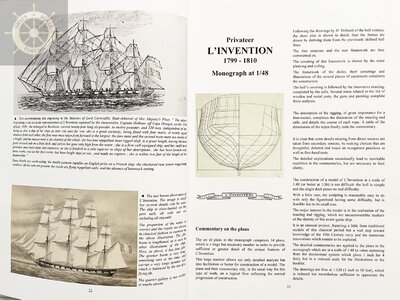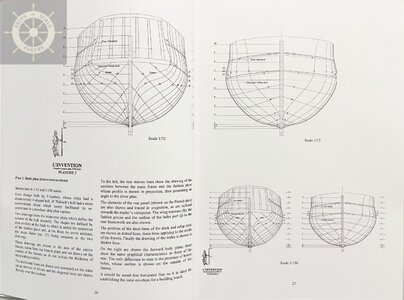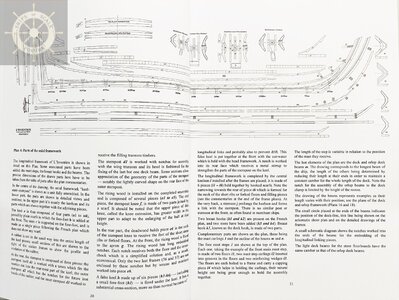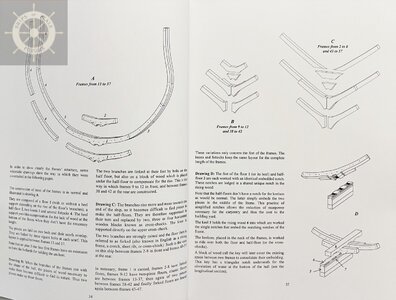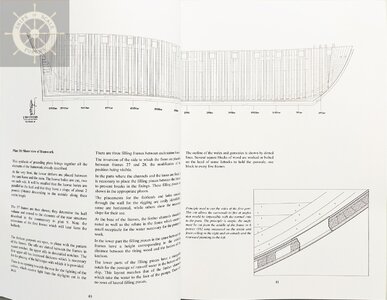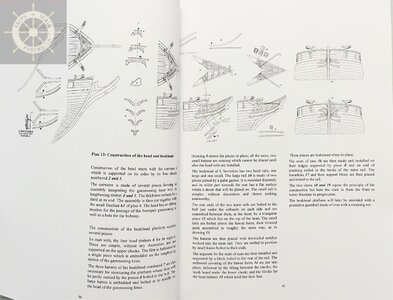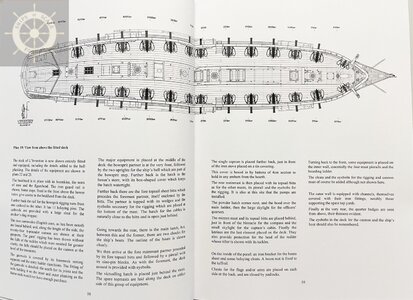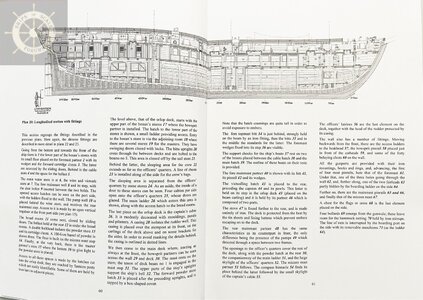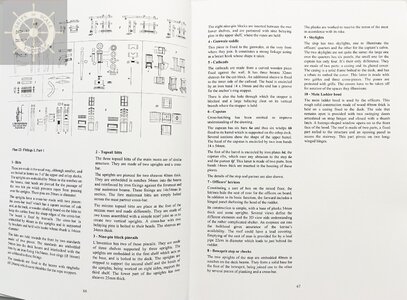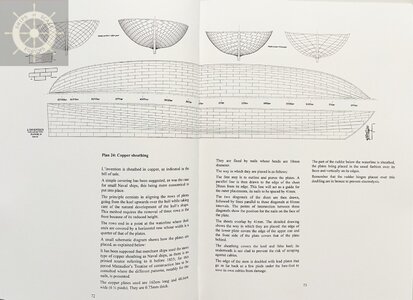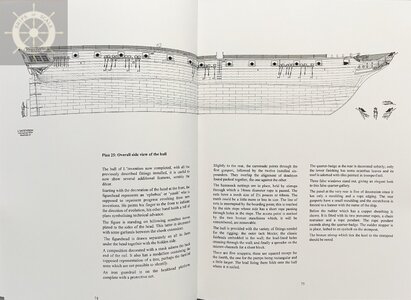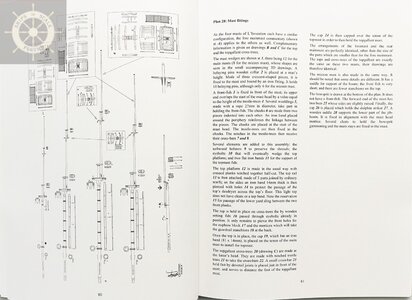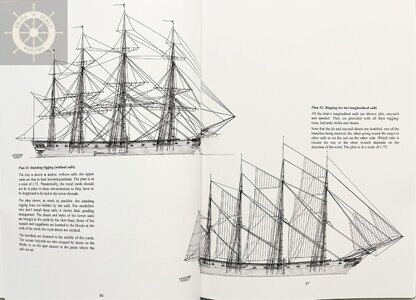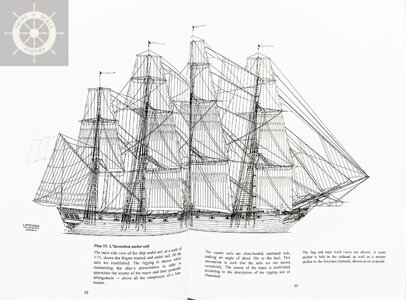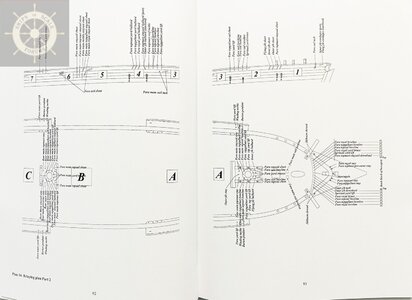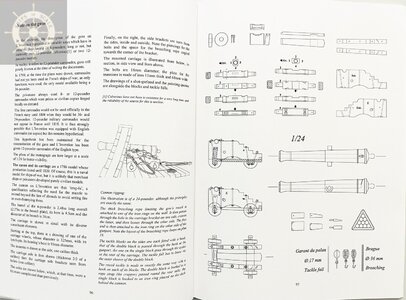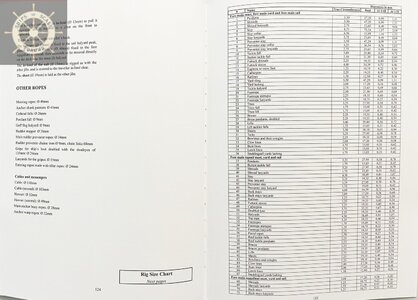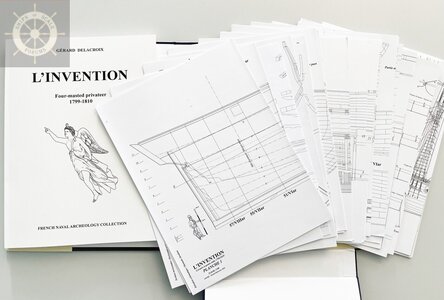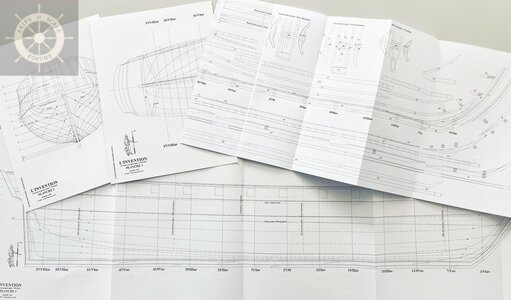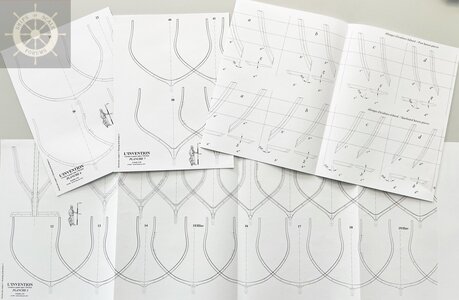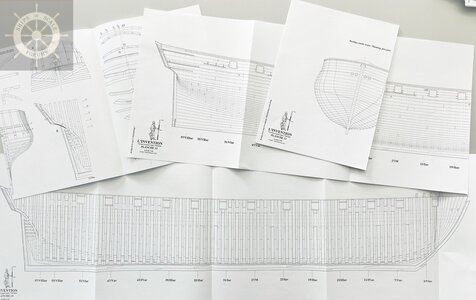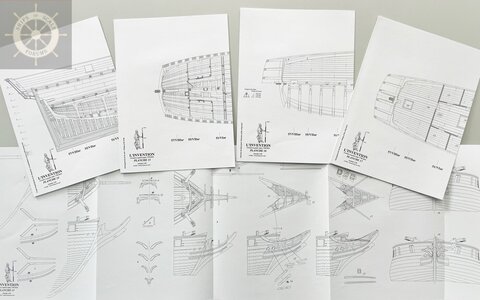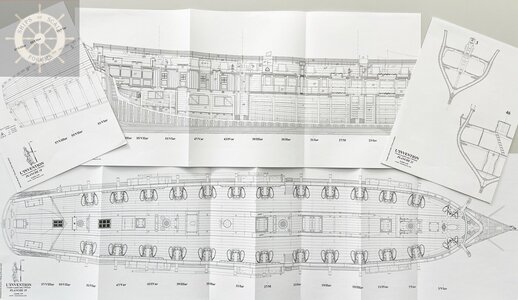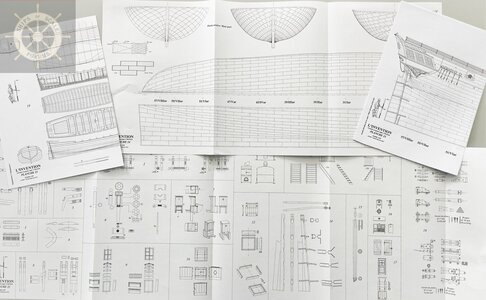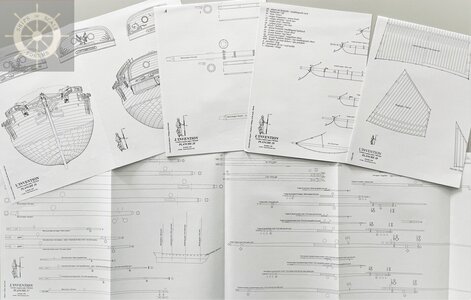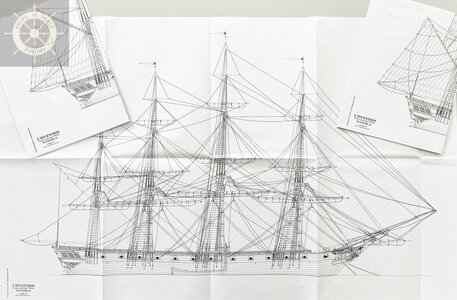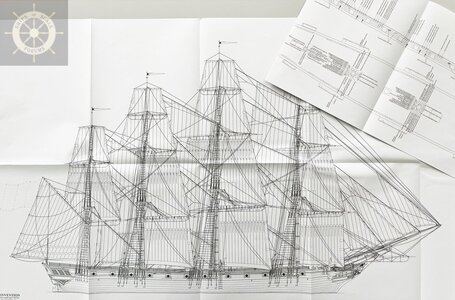Planset Review:
L’INVENTION
Four-masted privateer
1799 - 1810
by:
GÉRARD DELACROIX
Translated by Dr. Anthony Klouda
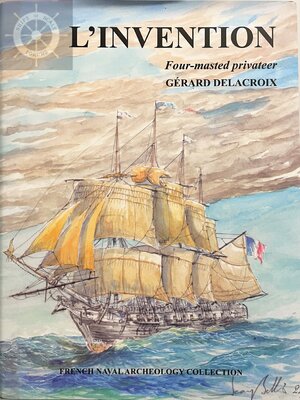
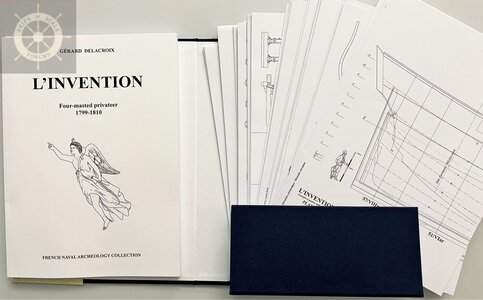
available directly from ancre in french, english, italian or spanish language
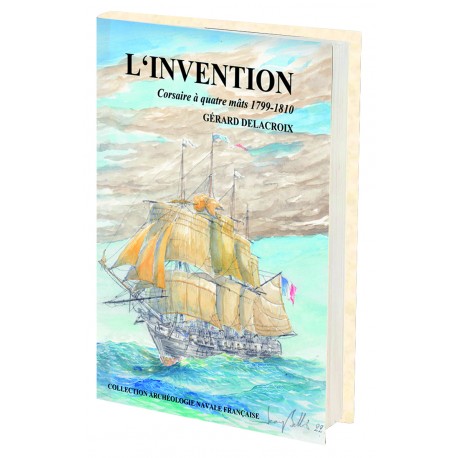
 ancre.fr
ancre.fr
drawings in typical scale 1:48, but also available in 1:36 or 1:72
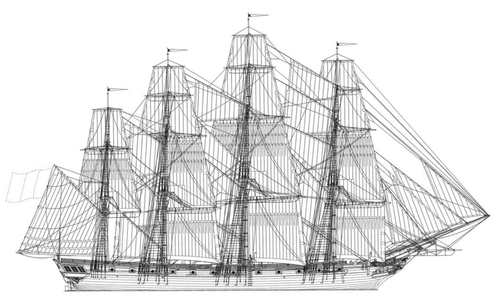
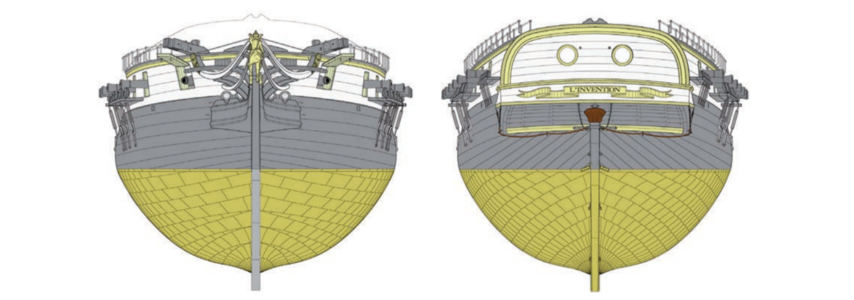
Size of the model in scale 1:48
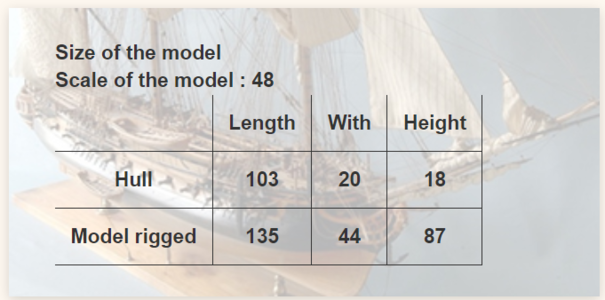
SYNOPSIS:
Privateers, contrary to pirates, were entirely legal. They generally used old merchant vessels, but some of the ships used were built specially to chase and capture.
During the Napoleonic wars (1793-1815) about 2,900 French privateer ships were used on the world’s seas.
During this period, and under pressure from English cruisers which were strangling French maritime commerce, entrepreneurs constructed and armed numerous privateer ships specially built for this purpose.
Simple in concept, these ships were rapid and highly manoeuvrable for their effectiveness, even though they were economically built. The only end of the owners being their profitability, the construction of the privateers was lightly executed at minimum cost.
The formula proved to be effective as English commerce and that of its allies was sorely tried by the war of intense competition at that time.
L’Invention, made in Bordeaux in 1799/1800, is one of these ships — but innovatively designed for the period, having a hull with narrow lines and unique four masted rigging. It was a precursor well in advance of the clippers which were to come some decades later.
Despite a short career as a privateer, it had the advantage of being built for the chase while adopting exceptional technical solutions
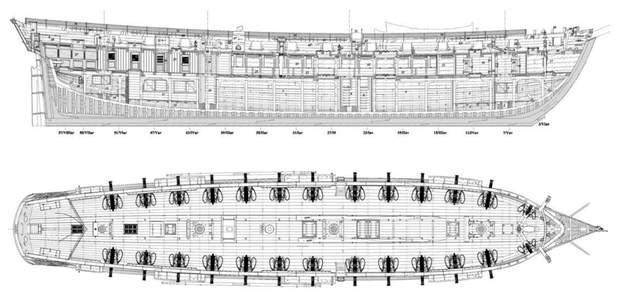
CONTENTS OF THE MONOGRAPH
The monograph comprises all the drawings necessary for a framed model as all the parts are illustrated and commented on.
A range of technical notes and the detailed description of the rigging for a four-master complete the set of plans.
A monograph in a cloth slipcase and a cover painting by Jean Bellis,
including an explanatory booklet of 130 pages with a set of 34 plans to a scale of 1:48 detailing its construction and rigging.
General background of privateering
- Privateering ships - Some plans of the Bordeaux privateers
Reconstitution of L’Invention :
- Masting
- The question of oars
- The deck
- The hull
History of L’Invention
Monograph 1:48
- Commentary on the plans
- Details of metal parts
- Painting
- Note on the guns
- Timber dimensions
- Description of the rigging
- Masts
- Yards
- Sails
The plans in the monograph are at a scale of 1:48:
1 – Schematic sheer plan.
2 – Body plans (Transverse sections)
3 – Half breadth plans (Horizontal sections)
4 – Parts of the axial framework
5, 6 &7 – Drawings of the frames
8 – Hawse timbers
9 – Rear framework and quarter badge construction
10 – Sheer view of the framework
11 – Hull planking Part 1 and hold ceiling planking
12 – Hull planking Part 2
13 – Construction of the head and beakhead
14 – Longitudinal cross-section of the framework
15 – Hold fittings
16 – Orlop deck structure
17 – Orlop deck fittings
18 – Main deck structure
19 – View from above the fitted deck
20 – Longitudinal section with fittings
21 – Cross-sections
22 – Fittings, Part 1
23 – Fittings, Part 2
24 – Copper cladding
25 – Overall side view of the hull
26 – Front and rear views
27 – Masting
28 – Mast fittings
29 – Mast fittings and blocks
30 – Sails
31 – Standing rigging (without sails)
32 – Rigging for the longitudinal sails
33 – L’Invention under sail
34 – Belaying plan
Before I show you the content of this amazing detailed monograph more in detail, some more information about the vessel Invention
Launched in 1801 in Bordeaux, she was, caused by the much smaller armement of 24 guns 6 pounders, already captured by the 38-gunner HMS Arethusa and 42-gunner HMS Immortalite only some months later in the same year
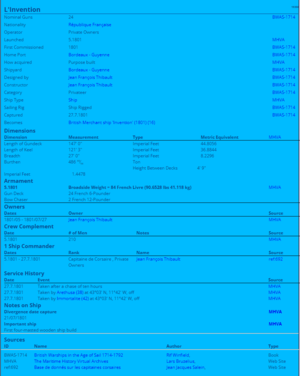
After capture she was surveyed by the english shipwrights and a contemporary drawing is still existing in the NMM

 www.rmg.co.uk
www.rmg.co.uk
She was re-rigged to a 3-masted and served with a letter of Marque until 1810 when she wrecked at the entrance of the Rio de la Plata
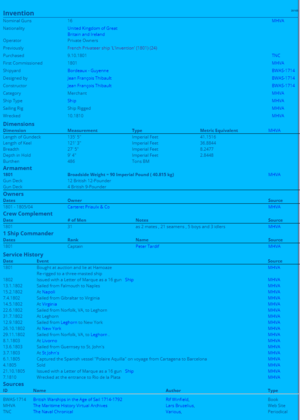
in the following post(s) I will show you this great monograph and planset in more detail with Look Inside
L’INVENTION
Four-masted privateer
1799 - 1810
by:
GÉRARD DELACROIX
Translated by Dr. Anthony Klouda


available directly from ancre in french, english, italian or spanish language

L’INVENTION Four-masted privateer -1799 - Ancre
L'Invention Four-masted privateer 1799-1810. All the drawings necessary to make a fully-framed model AVAILABLE.
drawings in typical scale 1:48, but also available in 1:36 or 1:72


Size of the model in scale 1:48

SYNOPSIS:
Privateers, contrary to pirates, were entirely legal. They generally used old merchant vessels, but some of the ships used were built specially to chase and capture.
During the Napoleonic wars (1793-1815) about 2,900 French privateer ships were used on the world’s seas.
During this period, and under pressure from English cruisers which were strangling French maritime commerce, entrepreneurs constructed and armed numerous privateer ships specially built for this purpose.
Simple in concept, these ships were rapid and highly manoeuvrable for their effectiveness, even though they were economically built. The only end of the owners being their profitability, the construction of the privateers was lightly executed at minimum cost.
The formula proved to be effective as English commerce and that of its allies was sorely tried by the war of intense competition at that time.
L’Invention, made in Bordeaux in 1799/1800, is one of these ships — but innovatively designed for the period, having a hull with narrow lines and unique four masted rigging. It was a precursor well in advance of the clippers which were to come some decades later.
Despite a short career as a privateer, it had the advantage of being built for the chase while adopting exceptional technical solutions

CONTENTS OF THE MONOGRAPH
The monograph comprises all the drawings necessary for a framed model as all the parts are illustrated and commented on.
A range of technical notes and the detailed description of the rigging for a four-master complete the set of plans.
A monograph in a cloth slipcase and a cover painting by Jean Bellis,
including an explanatory booklet of 130 pages with a set of 34 plans to a scale of 1:48 detailing its construction and rigging.
General background of privateering
- Privateering ships - Some plans of the Bordeaux privateers
Reconstitution of L’Invention :
- Masting
- The question of oars
- The deck
- The hull
History of L’Invention
Monograph 1:48
- Commentary on the plans
- Details of metal parts
- Painting
- Note on the guns
- Timber dimensions
- Description of the rigging
- Masts
- Yards
- Sails
The plans in the monograph are at a scale of 1:48:
1 – Schematic sheer plan.
2 – Body plans (Transverse sections)
3 – Half breadth plans (Horizontal sections)
4 – Parts of the axial framework
5, 6 &7 – Drawings of the frames
8 – Hawse timbers
9 – Rear framework and quarter badge construction
10 – Sheer view of the framework
11 – Hull planking Part 1 and hold ceiling planking
12 – Hull planking Part 2
13 – Construction of the head and beakhead
14 – Longitudinal cross-section of the framework
15 – Hold fittings
16 – Orlop deck structure
17 – Orlop deck fittings
18 – Main deck structure
19 – View from above the fitted deck
20 – Longitudinal section with fittings
21 – Cross-sections
22 – Fittings, Part 1
23 – Fittings, Part 2
24 – Copper cladding
25 – Overall side view of the hull
26 – Front and rear views
27 – Masting
28 – Mast fittings
29 – Mast fittings and blocks
30 – Sails
31 – Standing rigging (without sails)
32 – Rigging for the longitudinal sails
33 – L’Invention under sail
34 – Belaying plan
Before I show you the content of this amazing detailed monograph more in detail, some more information about the vessel Invention
Launched in 1801 in Bordeaux, she was, caused by the much smaller armement of 24 guns 6 pounders, already captured by the 38-gunner HMS Arethusa and 42-gunner HMS Immortalite only some months later in the same year

French Privateer ship 'L'Invention' (1801)
French Privateer ship 'L'Invention' (1801). Dates of service, name changes, previous and next incarnations, dimensions, armament, commanders, officers and crewmen, actions, battles, sources
threedecks.org
After capture she was surveyed by the english shipwrights and a contemporary drawing is still existing in the NMM

sheer & profile | Royal Museums Greenwich
She was re-rigged to a 3-masted and served with a letter of Marque until 1810 when she wrecked at the entrance of the Rio de la Plata

British Merchant ship 'Invention' (1801)
British Merchant ship 'Invention' (1801). Dates of service, name changes, previous and next incarnations, dimensions, armament, commanders, officers and crewmen, actions, battles, sources
threedecks.org
in the following post(s) I will show you this great monograph and planset in more detail with Look Inside
Attachments
Last edited:


